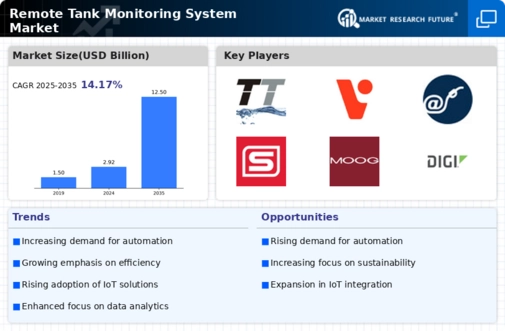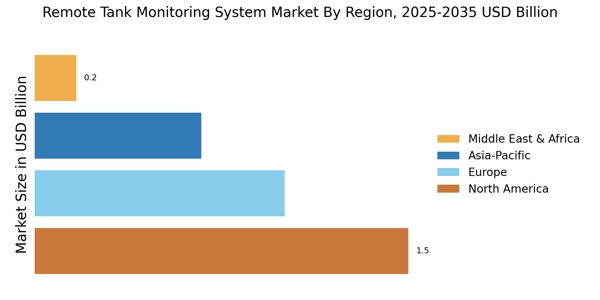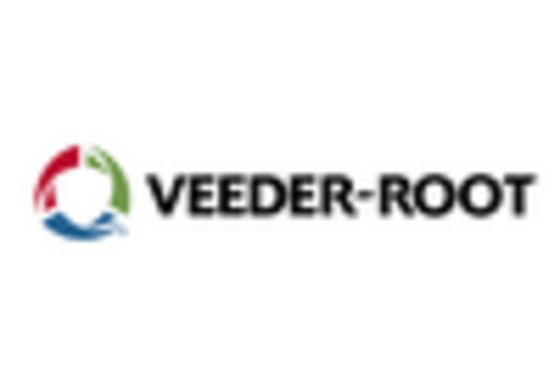The Remote Tank Monitoring System Market is currently characterized by a dynamic competitive landscape, driven by the increasing demand for efficient inventory management and environmental compliance. Key players such as Emerson (US), Honeywell (US), and Siemens (DE) are strategically positioned to leverage technological advancements and enhance operational efficiencies. Emerson (US) focuses on innovation through its advanced analytics and IoT capabilities, while Honeywell (US) emphasizes digital transformation and integration of AI in monitoring systems. Siemens (DE) is actively pursuing regional expansion, particularly in emerging markets, which collectively shapes a competitive environment that is increasingly reliant on technological sophistication and customer-centric solutions.
In terms of business tactics, companies are localizing manufacturing to reduce costs and optimize supply chains, which is particularly relevant in the context of global economic fluctuations. The market appears moderately fragmented, with a mix of established players and emerging startups. This structure allows for a diverse range of solutions, although the influence of key players remains substantial, as they set benchmarks for innovation and service delivery.
In August 2025, Emerson (US) announced a partnership with a leading cloud service provider to enhance its remote monitoring capabilities. This strategic move is likely to bolster Emerson's position in the market by integrating cloud-based analytics, thereby improving data accessibility and real-time decision-making for clients. Such partnerships may also facilitate the development of more sophisticated monitoring solutions that cater to the evolving needs of the industry.
In September 2025, Honeywell (US) launched a new suite of AI-driven monitoring tools designed to optimize tank management processes. This initiative underscores Honeywell's commitment to digital transformation and positions the company to capitalize on the growing trend of automation in the sector. By leveraging AI, Honeywell aims to provide clients with predictive insights that can significantly reduce operational risks and enhance efficiency.
In October 2025, Siemens (DE) unveiled its latest remote monitoring platform, which incorporates advanced machine learning algorithms to improve predictive maintenance capabilities. This development is indicative of Siemens' focus on innovation and its intent to lead in the integration of cutting-edge technologies within the remote tank monitoring space. The introduction of such platforms is expected to set new standards for operational excellence and reliability in tank management.
As of October 2025, the competitive trends in the Remote Tank Monitoring System Market are increasingly defined by digitalization, sustainability, and the integration of AI technologies. Strategic alliances are becoming more prevalent, as companies recognize the need to collaborate to enhance their technological offerings. Looking ahead, it is anticipated that competitive differentiation will evolve from traditional price-based strategies to a focus on innovation, technological advancement, and supply chain reliability, thereby reshaping the market landscape.


















Leave a Comment